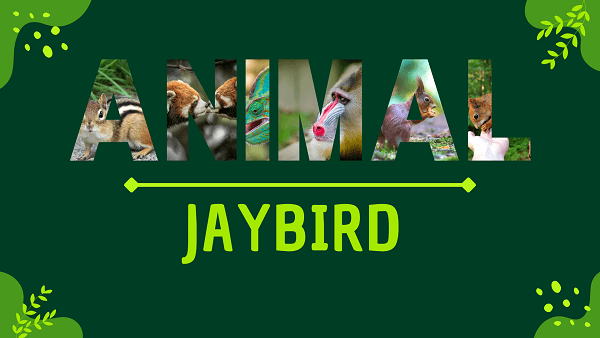Jaybird | Facts, Diet, Habitat & Pictures
Home » Animals » Jaybird | Facts, Diet, Habitat & Pictures
Jaybird Overview
Appearance
The jaybird is a medium-sized songbird known for its striking appearance. It typically features a bright blue plumage with white or gray markings on its wings and tail. Its head often displays a crest of feathers that can be raised or lowered.
The jaybird has a sturdy beak, which is usually dark-colored, and its eyes are distinctively bright and intelligent. Its body is sleek and streamlined, allowing for agile flight.
Origins And Evolution
The evolutionary history of jaybirds, commonly known as jays, is entwined with the diverse Corvidae family, which includes crows, ravens, and magpies. This family is known for its intelligence and adaptability. Jays are believed to have originated in Asia and gradually radiated into various regions, leading to the development of different species.
As omnivorous birds, jays evolved to thrive in a range of environments, from dense forests to urban areas. They’ve developed specialized behaviors like caching food, which helps them survive during harsh winters. Fossil records reveal a long history of jays dating back millions of years, showcasing their ability to adapt and diversify over time.
Today, jays are found on multiple continents, often occupying diverse habitats and displaying a wide array of plumage variations and adaptations, reflecting their evolutionary journey through changing landscapes and ecological niches.
Behavior and Lifestyle
Jays are known for their highly intelligent and adaptable behavior. They are opportunistic omnivores, feeding on a variety of foods such as insects, seeds, nuts, and even small vertebrates. Jays are excellent foragers and often store excess food in caches to consume later.
They have complex social structures and can be found in family groups or larger flocks, depending on the species. Communication among jays is intricate, with a wide range of vocalizations and body language used for signaling danger, asserting dominance, and maintaining group cohesion.
Jaybird Scientific Classification
- Kingdom: Animalia
- Phylum: Chordata
- Class: Aves
- Order: Passeriformes
- Family: Corvidae
Jaybird Locations
- North America
- Europe
- Asia
- Africa
- Central America
- South America
- Australia
- Pacific Islands
Fast Facts
- Name: Jaybird
Scientific Name: Cyanocitta cristata
Habitat: Forests, Urban areas
Diet: Omnivorous, Varied
Physical Features: Colorful, Crested
Nocturnal: Diurnal mostly
Solitary: Social, Group-living
Unique Order: Passeriformes
Lifespan: 7-10 years
Conservation Status: Least Concern
Fun Facts: Mimicry, Intelligent birds
Physical Characteristics
- Color: Vibrant Blue
Skin Type: Feather-covered
Top Speed: 40 mph
Lifespan: 7-10 years
Weight: 70-100 grams
Length: 30-35 cm
Age of Sexual Maturity: 1 year
Age of Weaning: 3 weeks
Jaybird FAQs
What is a jaybird?
A jaybird is a type of bird belonging to the Corvidae family, known for its vibrant plumage, intelligence, and diverse species.
What do jaybirds eat?
Jaybirds are omnivorous and feed on a variety of foods, including insects, seeds, nuts, berries, and occasionally small vertebrates.
Do jaybirds migrate?
Some species of jaybirds, like the blue jay, are known to migrate, while others are year-round residents in their habitats.
What is the purpose of jaybirds caching food?
Jays cache food as a survival strategy, especially in winter. They store excess food in various locations to have a backup food source when resources are scarce.
Are jaybirds social birds?
Yes, jaybirds are social animals and often live in family groups or flocks, depending on the species.


